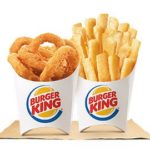
What is a service?
You experience services here and there, don’t you? You may already know that a service is intangible – something you experience, but can’t touch, see, taste or hear. Today’s world economy is increasingly characterised as a service economy. Many countries around the world have seen an increase in growth, share, and importance of service industries in their economies. So, the topic of service marketing has its own merits and needs detailed discussions.
Characteristics of a service
Services have four key characteristics i.e. intangibility, inseparability, perishability, and variability. This discussion that follows focuses on these key characteristics of a service.
Intangibility
Products are visible and have physical aspects, whereas services are intangible. You cannot experience and consume services until you purchase them. This is one of the fundamental characteristics of a service which differentiates it from a product. However, this intangibility presents a big challenge for marketers. How will they convince customers to buy something that the latter cannot see, touch or taste? Banks and credit card companies often promote the sale of credit cards to customers by emphasizing the conveniences and advantages of possessing a credit card. It may also be necessary for marketers to attach some tangible features to their intangible offerings.
Inseparability
You cannot separate a service from its provider. It means that services are generated and consumed within the same time frame. Let’s take an example. How about using a taxi service without a taxi driver? Likewise, when you go to a barber shop for a haircut, you experience the same inseparability. Delivery of the haircut by a barber and consumption of it by you occurs simultaneously.
Perishability
It is another important feature of a service. Services have a high degree of perishability. If you don’t use a service today, it is lost forever. For example, airlines cannot transfer spare seats to their next flights. Likewise, if you are not satisfied with the services of a barber, you can’t return the service of the haircut that was rendered to you. Parishability is a big challenge for marketers. To continue with the example of airlines, marketers need to ensure as less spare seats as possible in each flight. They can achieve this by a thorough analysis of supply and demand and by using effective marketing techniques.
Variability
It refers to heterogeneity (the quality or state of being diverse in character or content). Each service offering is unique and service providers may not be able to repeat it exactly the same time and again. For example, think about customer service at a restaurant. Food served may be identical; however, the service of a waiter consecutively to two customers may not be the same. It is noteworthy that the quality of a service may vary from one provider to another and depends on who provides it, when it is provided, and how it is provided.
The article publication date: 01 August 2017
Further Reading/References
Lancaster, G. & Reynolds, P. (2004) Marketing, 1st Edition, Palgrave Macmillan
Photo credit: Hannon Digital
Author: M Rahman
M Rahman writes extensively online and offline with an emphasis on business management, marketing, and tourism. He is a lecturer in Management and Marketing. He holds an MSc in Tourism & Hospitality from the University of Sunderland. Also, graduated from Leeds Metropolitan University with a BA in Business & Management Studies and completed a DTLLS (Diploma in Teaching in the Life-Long Learning Sector) from London South Bank University.

